The story of Champion begins back in 1919 when two brothers, Abraham and William Feinbloom, embarked on a quest to reshape the American clothing scene with Knickerbocker Knitting Mills. This little operation started out selling knitwear wholesale, but the Feinbloom brothers were no fools. They spotted a glaring gap in the market: sportswear. You see, American football players were out there freezing in flimsy gear, which wasn’t exactly setting them up for success on the field. Recognizing an opportunity, the Feinblooms decided it was high time someone gave athletes the sturdy, comfortable clothing they deserved.
The brothers began working with local manufacturers to whip up the first sweatshirts and tees specifically designed with athletes in mind. They didn’t have to wait long for their big break: the University of Michigan took one look at these garments and knew they were onto something. Here was gear that could keep players warm during those bitterly cold breaks, protecting them from the chill and giving them an edge in both comfort and performance. This early relationship marked the start of what would soon become the uniform of choice for college athletes across the country.
As their reputation soared, the Feinblooms realized that they needed a new name that spoke directly to the athletic spirit they embodied. And so, Knickerbocker Knitting Mills transformed into Champion Knitting Mills—a name that still echoes through locker rooms, gym halls, and streetwear collections around the world today.
90s Champion TV Commercial
How to tell if Champion is vintage from the Logo
The evolution of the Champion logo reflects the brand’s journey from a small knitwear company to a renowned sportswear giant. Initially known as the Knickerbocker Knitting Company, the original logo featured an athlete crossing a finish line. In the 1960s, the now-iconic “C” with the vertical bar became the official logo, symbolizing the brand’s commitment to quality and performance. This guide highlights the key changes in the Champion logo from its inception in 1919 to the present, providing valuable insights for those interested in vintage Champion apparel.
1919 to 1960s logo
- The original logo included an image of an athlete crossing a finished line.
- Initially the company was called the Knickerbocker Knitting Company, however it used this logo and branding for the tags of its first ever apparel deal with the Michigan Wolverines.
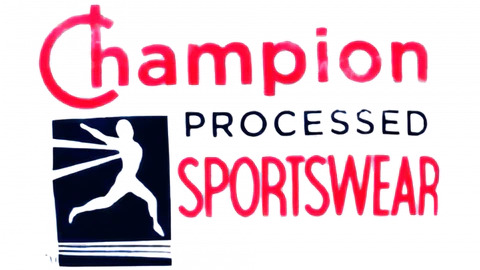
1919 to 1960 Champion logo
1960s to now
- Throughout the 1950s, the Champion logo was experimented with and the well-known C with the vertical bar can be found on a few items of clothing.
- This design didn’t reach the status of the brands ‘official’ logo until the 1960s, suggesting that it wasn’t put out there for its first decade of existence.
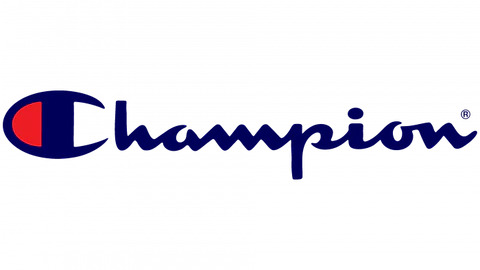
1960 to now Champion logo
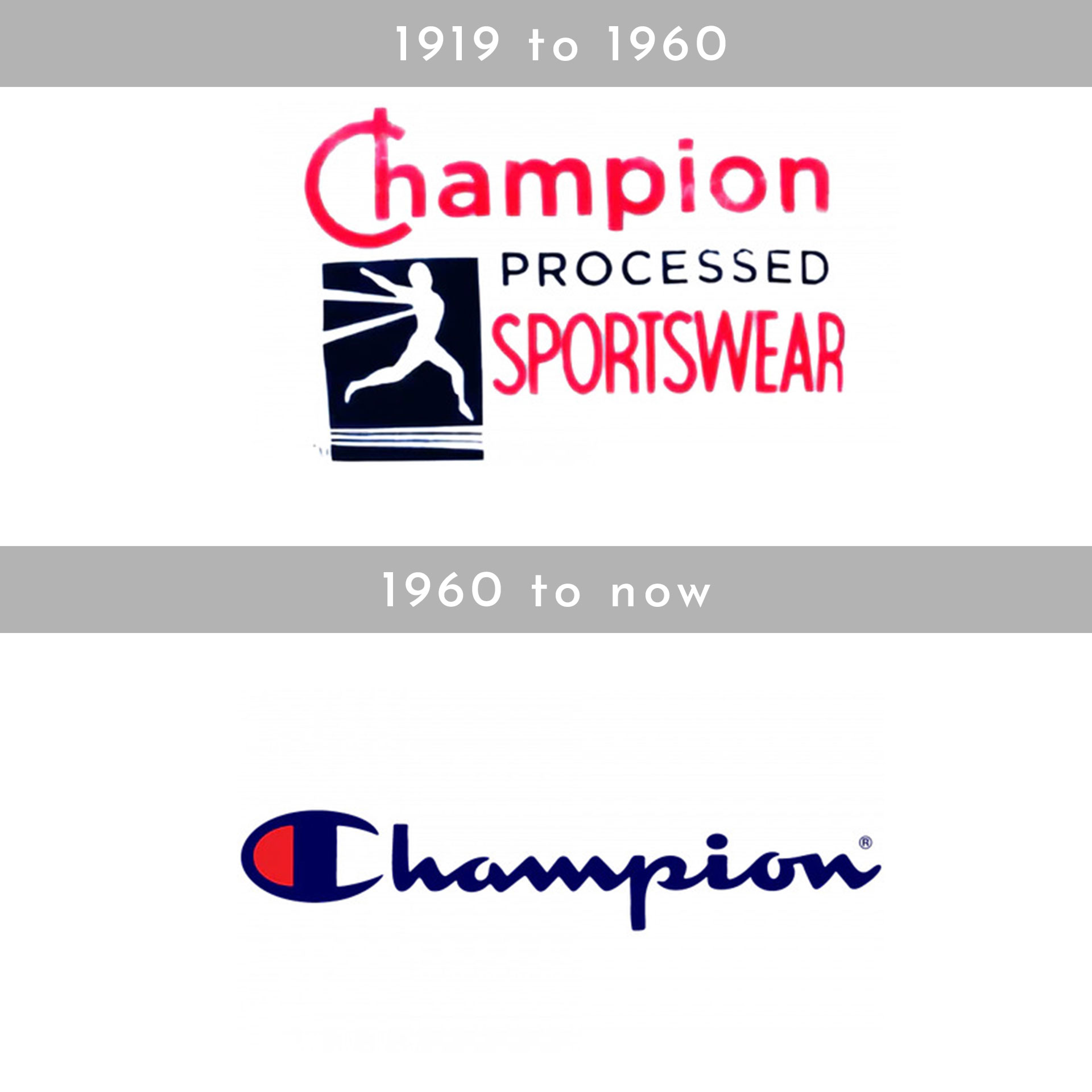
How to tell if Champion is vintage from the Tags
Champion’s tags have evolved significantly over the decades, offering a unique glimpse into the brand’s history and development. From the early days of the Champion Knitwear Company in the 1940s, featuring a blocky font and an emblem of a runner, to the widely recognized script logo of the 1970s, each era’s tags reflect the brand’s growth and changing trends. This guide details the distinctive features of Champion tags from the 1940s to the 2010s, helping collectors and enthusiasts authenticate vintage Champion pieces and appreciate the brand’s rich legacy. Also, if you’ve got a vintage Champion hoodie with a loose drawstring, you can learn how to fix it using our guide here.
Confused by your vintage tags? Submit a picture on our vintage tag identification page, and we’ll help you identify them!
1940s vintage Champion tags
- At this time the company was still known as the Champion Knitwear Company, as can be seen on the tag.
- This original logo includes an emblem on the left side of a runner crossing a finish line.
- The word Champion is blocky and does not really resemble the modern font.

1940s Champion tags
1950s vintage Champion tags
- In the 1950s the runner emblem was changed to blue.
- In the late 1950s a new font was used for the Champion text and replaced Knitwear Company with the words Processed Sportswear.
- The font was also updated in the late 1950s to a more script like font.

1950s Champion tags
1960s vintage Champion tags
- Some of the tags at this time included the emblem of the runner in the C of Champion.
- The text remained blocky.

1960s Champion tags

1960s Champion tags
1970s vintage Champion tags
- The commonly recognised script logo became widely adopted on tags in the 1970s.
- It includes the C with the line through it.
- The script logos were offset on a coloured background at this time as can be seen.
- Champion also moved away from using measurements for sizing and only used word sizing from this point onwards.

1970s Champion tags
1980s vintage Champion tags
- The script logo was in blue in the 1980s.
- In the 1980s other materials were introduced other than cotton as can be seen on the left tag.

1980s Champion tags

1980s Champion tags
1990s vintage Champion tags
- In the 1990s a heavier, slightly shiny material was used for neck tags as can be seen on the left.
- On the right the thick tag material and the pixelated stitched in text is a sign that this is a 1990s tag, as this type was generally only used at this time.

1990s Champion tags
2000s vintage Champion tags
- Some tags at this time moved to a longer design with more care information on them as can be seen with the left tag.
- The tagline of ‘Authentic Athletic Apparel’ was introduced in the 2000s.
- Over the years more and more emphasis has been placed on the C emblem, and it has become a logo in its own right on tags and items of clothing.

2000s Champion tags
2010s vintage Champion tags
- The use of sizing in multiple languages became more common in the 2010s as Champion became a globally selling brand.
- A giveaway that an item of Champion clothing is relatively new is the inclusion of the website on the tags, as can be seen on the white tag on the right.
- More of the tags include the C emblem and the Champion script logo on them around this time.

2010s Champion tags
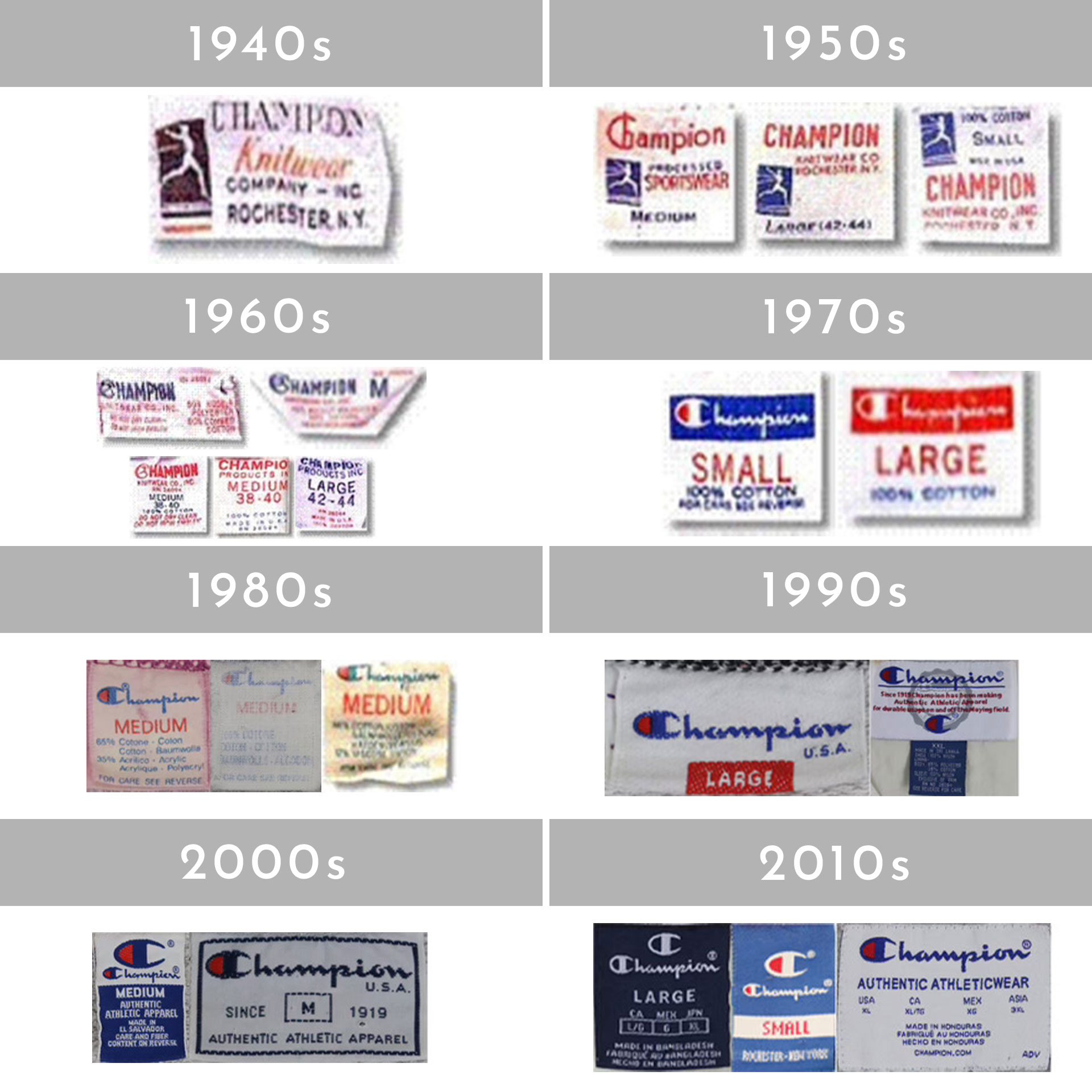
Vintage Champion tags through the years
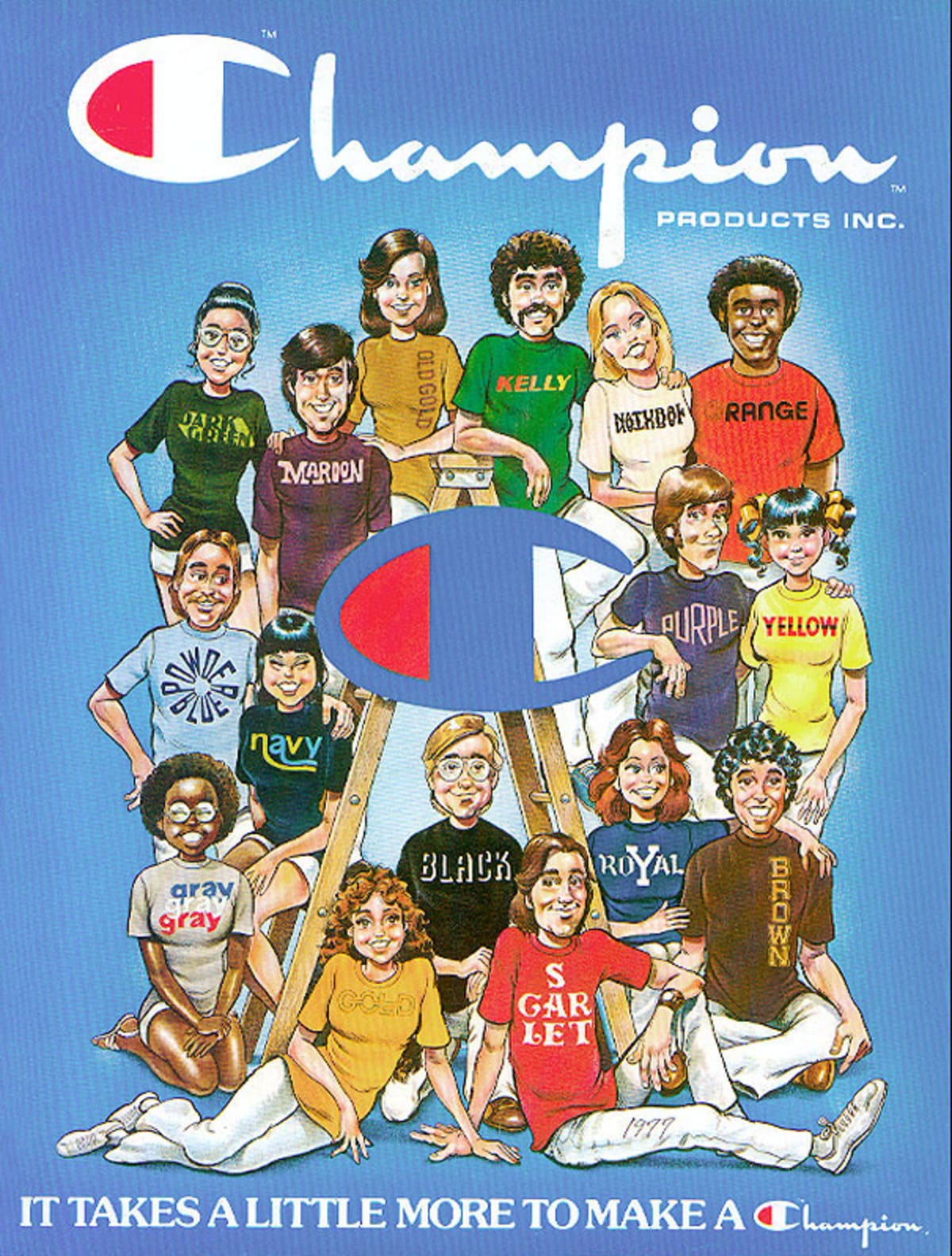



Good – I should definitely pronounce, impressed with your web site. I had no trouble navigating through all the tabs and related information ended up being truly easy to do to access. I recently found what I hoped for before you know it at all. Quite unusual. Is likely to appreciate it for those who add forums or anything, site theme . a tones way for your customer to communicate. Excellent task..